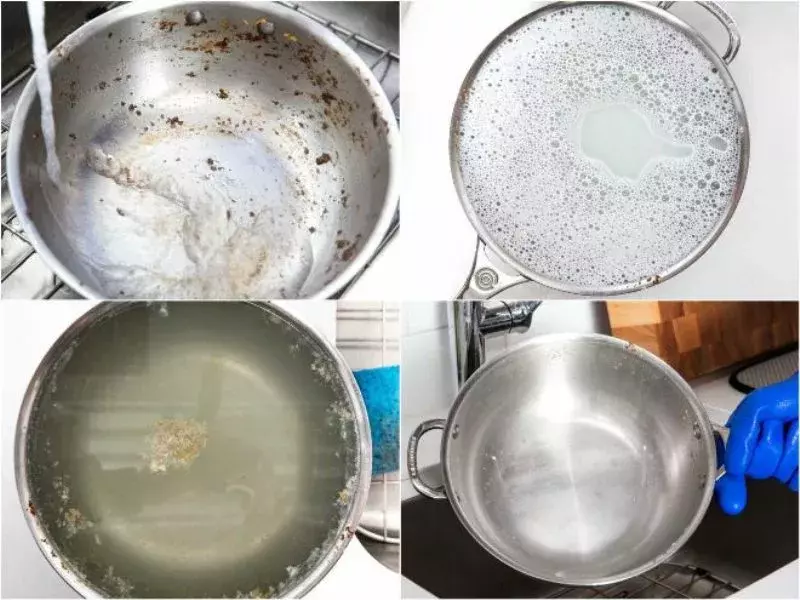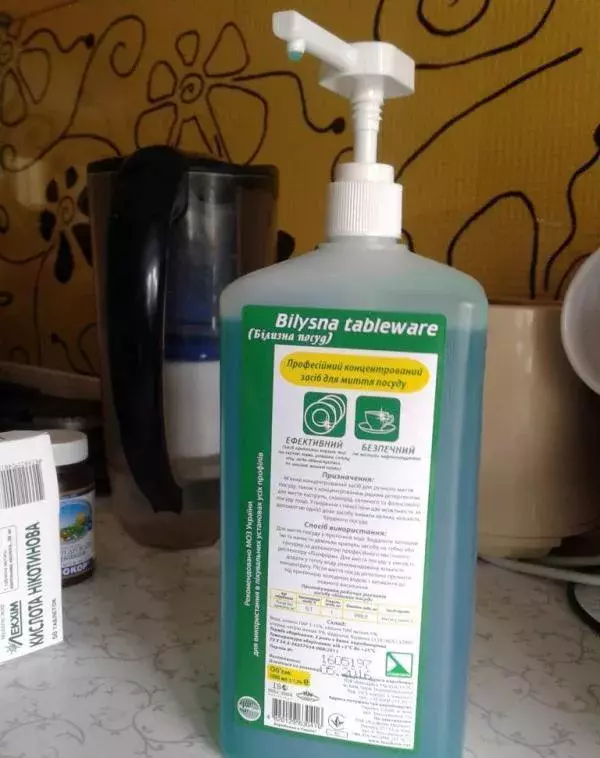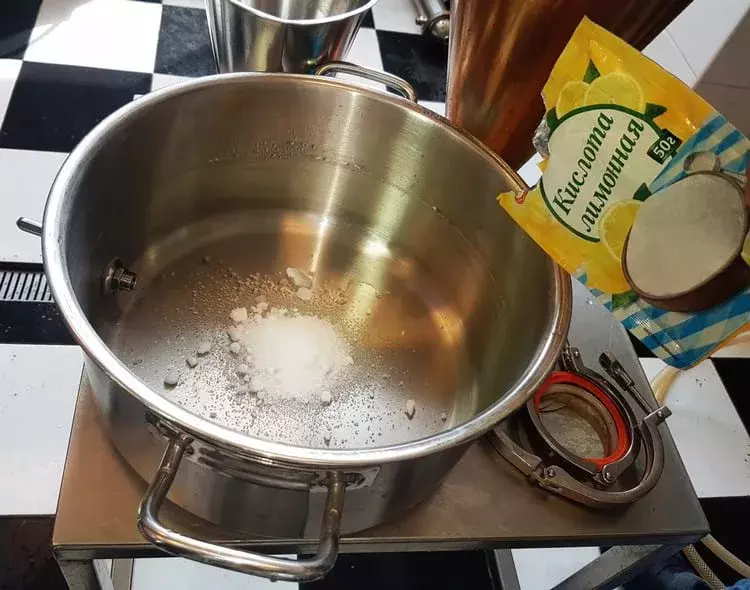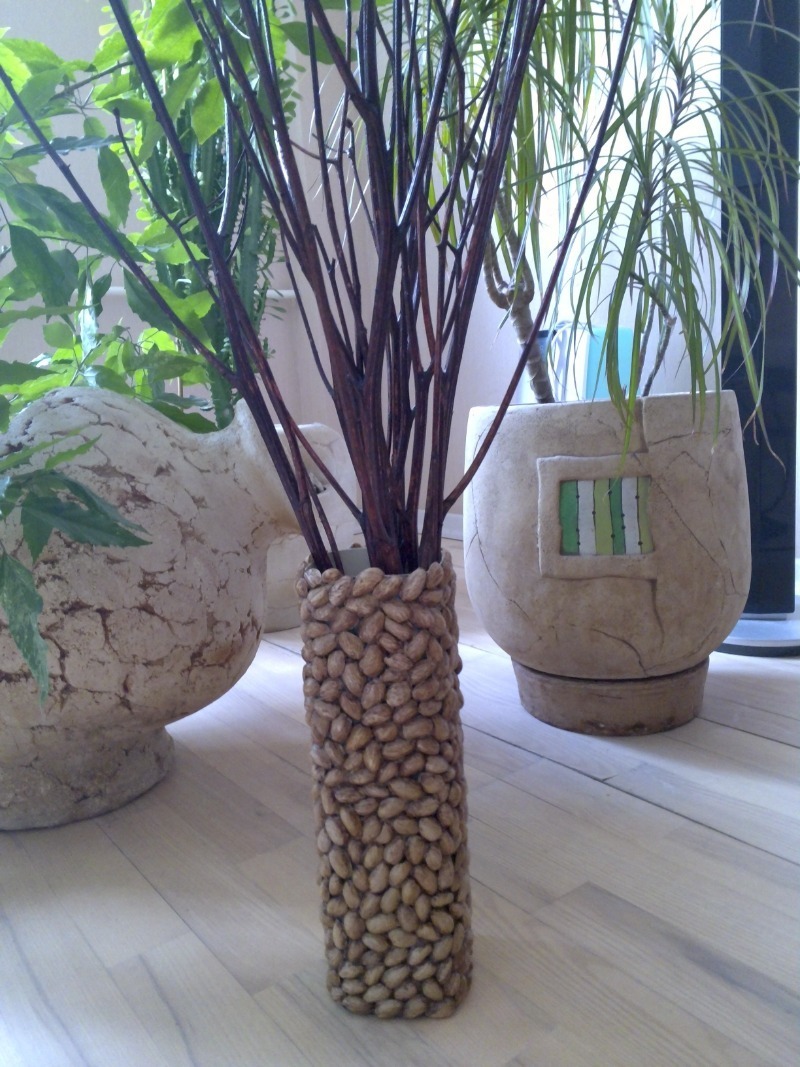After making syrup, caramel or jam, there is often a black and durable deposit on the bottom of the pan, which is very difficult to clean. During the cooking process, the sweet mass clings to microcracks on the surface of the dishes and sticks to the bottom. When heated, it literally "eats" and it is difficult to remove it without damaging the enamel.

Sugar heavily soils kitchen utensils during cooking.
How to wash burnt sugar from the pan correctly? There are many ways to clean sugar deposits without damaging the coating of the dishes. Folk methods using improvised means, and household chemicals will also help.

A sticky mass of sugar spoils cookware, stovetops, and ovens.
Content
- 1 Traces of fresh caramel
- 2 Burnt sugar
- 3 Cleaning depending on the material of the pot
- 3.1 enamel pot
- 3.2 Stainless steel pots
- 3.3 Aluminum pans
- 4 How to wash the pan from burnt sugar inside at home
- 4.1 How to clean with household chemicals
- 4.2 How to remove burnt sugar with citric acid
- 4.3 Salt cleaning
- 4.4 Remove sugar marks with baking soda
- 4.5 Cleaning with activated charcoal
- 4.6 Cleaning with soap and soda and silicate glue
- 4.7 How to use tooth powder
- 4.8 With dry mustard and coffee
- 4.9 Remove soot with vinegar
- 5 Preventive measures for burning sugar
- 6 VIDEO: How to clean a badly burnt pan.
Traces of fresh caramel
Removing caramel residue from the bottom of the pan is much easier while the sweet mixture is still hot and has not had time to burn badly. A thin layer of caramel can be removed with a kitchen spatula, a thick layer must be soaked in boiling water or soapy water.

To facilitate the cleaning process, you need to soak the dishes in hot or sparkling water.
Burnt sugar
It is necessary to get rid of the remains of burnt sugar immediately, in hot pursuit, while the remains have not caramelized yet. It is necessary to fill the pan with boiling water so that the soot is completely covered with water. After three hours, the burnt sugar will dissolve and settle to the bottom.

Clean the pan from fresh traces of jam or sugar should be immediately.
Cleaning depending on the material of the pot
Household chemicals and methods for cleaning burnt sugar must be selected depending on the material from which the pan is made. While brushing with a wire brush is suitable for aluminum cookware, this method is unacceptable for enamel or Teflon cookware.

It is only necessary to choose a suitable method that will not damage the surface.
enamel pot
When removing sugar deposits from such dishes, do not use a metal scraper, as the coating may be damaged. Then, in the process of cooking, food will constantly stick to the burnt area. stick to the damaged area, the enamel can also peel off and get into cooked food.

Cleaning enameled pans requires a delicate approach.
When studying tips on how to remove burnt sugar from an enameled pan, keep in mind that enameled dishes should not be abruptly poured with cold water, as temperature changes can lead to delamination enamel.
ATTENTION! Fresh apple peel will help with cleaning the enamel pan. It contains acid, which dissolves the burnt layer of the sweet mass.

Fresh apple peel will help to cope with the cleaning of the enamel pan.
Stainless steel pots
Stainless steel cookware looks elegant and expensive. But it is forbidden to clean the surface of stainless steel pots with any abrasive means. Otherwise, not only the appearance will be lost, but also the functionality. Food in such dishes will start to burn.

Stainless steel is best cleaned with soapy water.
Aluminum pans
It is necessary to wash off the burnt caramel from aluminum dishes without abrasive and caustic agents. Otherwise, damage may contribute to the release of harmful impurities into the cooked food. You can clean sugar deposits from an aluminum pan with soda, laundry soap or acetic acid.

The method of how to clean the pan of burnt sugar depends on the material of the kitchen utensils.
How to wash the pan from burnt sugar inside at home
Household detergents contain synthetic surfactants that reduce the adhesion of burnt caramel to the surface of the dish. But some products contain abrasive particles that can damage the enamel layer.

Dishwashing detergent will help remove traces of sugar.
How to clean with household chemicals
There are quite a few options for cleaning the pan from burnt sugar. The easiest way to get rid of sugar deposits is to use laundry soap.

The simplest surfactant is laundry soap.
For this you need:
- Grate the soap on a coarse grater.
- Pour the soap with water to form a thick mass.
- Apply the mixture to the affected areas.
- Leave for an hour to solidify the mass
- Pour boiling water over and boil over low heat for an hour.
- Cool, wash the plaque.

The method of how to clean the pan of burnt sugar depends on the material of the kitchen utensils.
Additional information: under the influence of soap, the carbon will peel off, and the coating of the pan will remain intact.
Also, a solution of whiteness is used to combat soot. In its pure form, it is not used for cleaning, it is diluted by half with water. Pour the solution into the dishes and leave for 2-3 hours.

In addition to cleaning carbon deposits, the chlorine-based composition also whitens enamel perfectly.
You can also clean carbon deposits with dishwasher tablets. When choosing household chemicals, it is better to opt for a gel or cream detergent composition. This consistency allows you to better linger on the burnt surface, fills microcracks and helps remove problematic contaminants.

There are industrial products designed specifically to deal with severe soot.
How to remove burnt sugar with citric acid
The acid helps loosen the burnt parts of the sugar from the sides and bottom of the pan. This cleaning option is suitable for different types of surfaces, since citric acid acts softer than other products, and the level of acidity at the correct dosage does not corrode the coating of dishes.

It is very effective in the fight against stuck sugar.
- Fill the pot with water to cover the impurities.
- Two teaspoons of concentrated citric acid will suffice per liter of water.
- Let stand 5-6 hours.
- Wipe off the soot with a soft sponge.

With its help, it will be possible to remove burnt sugar, as well as eliminate other types of pollution.
Important! Citric acid can be replaced with natural lemon juice or vinegar.
Salt cleaning
Salt cleaning is suitable for pots with enamel or aluminum coating. But this method is not suitable for stainless steel cookware, as dark spots appear on it from the salt.

If you don’t have any cleaning products on hand, ordinary salt will work great to clean the dishes from sugar deposits.
- Pour warm water over the bowl and leave for an hour.
- Then drain the water, and pour dry salt on the burnt places.
- Let stand for three hours, remove carbon deposits with a regular soft sponge.

The method is not suitable for stainless steel cookware, as it can cause stains and darkening of the surface.
Remove sugar marks with baking soda
Burnt sugar can also be washed off with baking soda. But in this case, it should be borne in mind that soda contains abrasive particles that can scratch the coating.
- Dilute two tablespoons of baking soda in a soapy solution.
- Apply to burned areas. Let stand 60 minutes.
- Wash dishes with warm water.

One of the effective methods for cleaning kitchen utensils is baking soda.
Please note: you can boil soda solution in a burnt saucepan for 10 minutes.
Cleaning with activated charcoal
A universal adsorbent, which, as a rule, is in a home first aid kit, will help remove sugar deposits from different types of dishes.

Activated carbon cleaning is suitable for pans made of any material.
- Tablets must be crushed to a homogeneous powder.
- Dilute with warm water. The mass should not be too liquid.
- Apply to the burnt layer of sugar caramel and let stand for half an hour.
- Rinse with warm water.

Activated charcoal is a safe way to clean kitchen utensils.
Cleaning with soap and soda and silicate glue
You can remove burnt dirt using the old Soviet method, tested by our mothers and grandmothers.
- Soften laundry soap, grate on a coarse grater.
- Fill the pot with water, put on a slow fire.
- Add grated soap to the water, squeeze out a tube of silicate glue and two tablespoons of soda ash.
- Boil 30 minutes.
- Clean with a sponge and rinse with warm water.

Do not clean the Teflon coating in this way.
How to use tooth powder
Tooth powder will gently and gently clean the dishes from sugar deposits, and the stainless steel saucepan will brighten and shine like a mirror.
- Dilute the powder with water to the consistency of sour cream.
- Apply the mixture to the burnt areas and leave for 12 hours.
- Wash off with soapy water.

Tooth powder will cope with sugar deposits.
With dry mustard and coffee
Removing carbon deposits using mustard and coffee is a fairly quick and uncomplicated method of getting rid of “sugar troubles”.
- Mustard powder and coffee are diluted with water to a thick paste.
- We apply the paste on the burnt places, let stand for three hours.
- Wipe off with a soft sponge.

You can use coffee grounds for the same purpose.
Remove soot with vinegar
Important: you need to clean enameled dishes not with a concentrated essence, but with a 6% solution.
You can use rice, apple or wine vinegar to remove carbon deposits.
- The stains are poured with vinegar so that the burnt layer is completely covered with acid.
- Close the pan with a lid and let stand for 4 hours, it is better to leave for a day.
- The softened layer is removed with a soft sponge.

An acidic environment remarkably contributes to the detachment of soot from the walls of dishes.
Attention! From the darkening of enameled dishes, you can use whey.
Preventive measures for burning sugar
You can avoid burning sugar or caramel during the preparation of marmalade, jam or jam by continuously stirring the sweet mass and cooking over low heat. Stir the jam only with a wooden spoon or spatula. Metal will scratch the bottom of the pan, which will contribute to burning. If, nevertheless, the jam began to burn, it is necessary to pour it into another dish, and pour the burnt pan immediately with water or soda.

The carbon dioxide contained in the drink destroys the burnt layer of sugar. It will be much easier to wash off carbon deposits after half an hour of soaking in sparkling water.
VIDEO: How to clean a badly burnt pan.
PreviousDishesHow to remove scale from a pot
NextDishesFeatures of Disposable Bakeware



